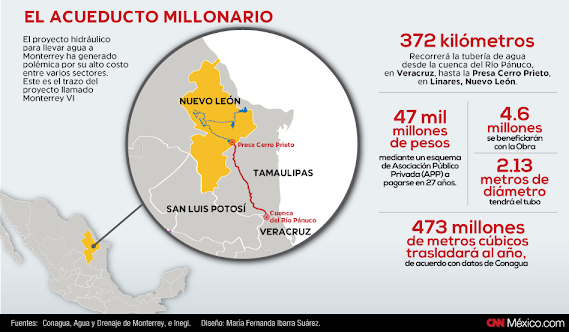The hydraulic fracturing (fracking) and the water from Mexico (Part 1: Panuco river and the Monterrey VI project).
I open an incoming series of publications with a topic I had read about some time ago, which is the natural gas and oil extraction by the hydraulic fracturing technique (dubbed as fracking). Despite of my education as physicist I will try not to get too technical and just explain the topic in such a way that is easy to understand, while being concise. First of all, my motivation to study around this topic is not to get the know-how, to extract oil and make me rich, but rather I got interested due to some old news about fracking. One of the first mandates from Andrés Manuel López Obrador (AMLO) when we took over the charge as president of Mexico, was to turn back the proposal about privatize the water in Mexico. An article (in spanish) in the La Jornada journal talks about it, based on a book by Dr. Alfredo Jalife-Rahme. The most frightening about this proposal was the idea of deviate the water coming from Panuco river by a project called "Monterrey VI". Even though the data I referred to is from 2016, the topic it not old-fashion at all, since the Monterrey's governor, Samuel Garcia, and the US ambassador in Mexico, Ken Salazar, were assessing the possibility to pursue again the project, still in 2022. Despite the fact that the previous article mentions the idea of supply with water to about 6 million people, the original conception was to bring the water from Panuco river (which meets the ocean in Tampico city) to Monterrey, in order to use it for the so-called fracking, so the initial investment can be retrieved and generate more earnings in the north of Mexico. However, although this sounds a bit fishy, I will discuss more about the cons of this idea. If you want to stop on this point, the summary on the following parts is: The fracking technique and its by-products can increase the sismic activity in the surroundings.


Comments
Post a Comment